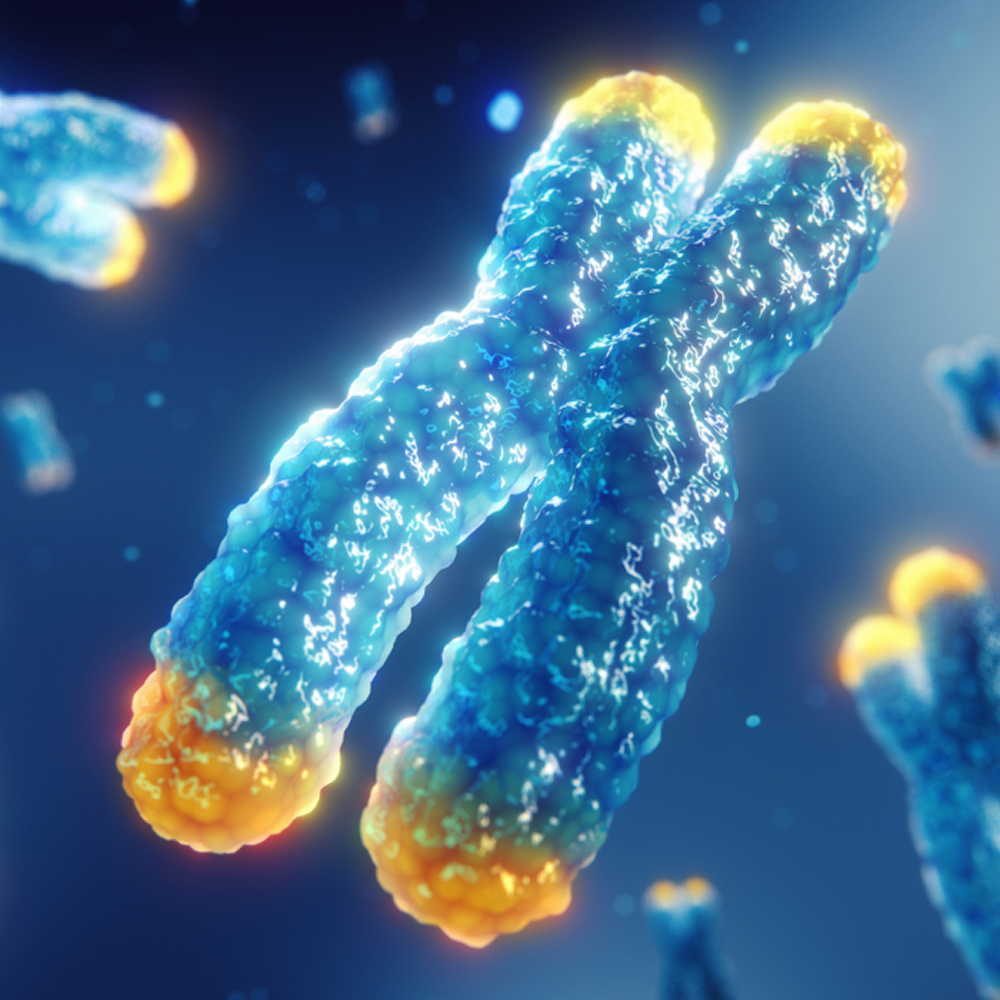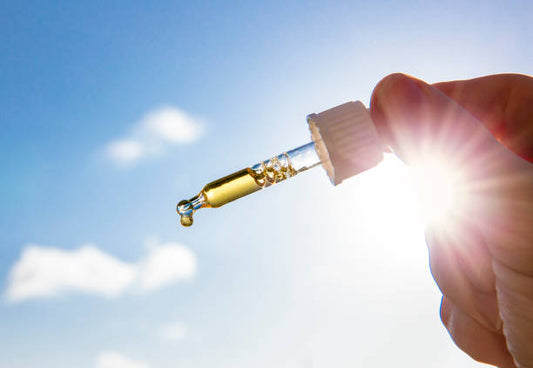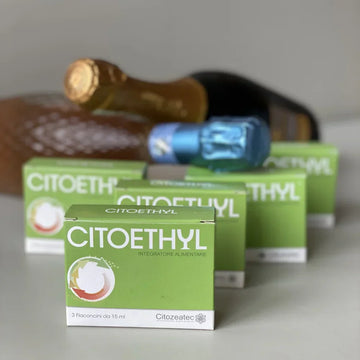Discover Related Products
Now explore supplements designed to support Longevity, Gut Health & Cellular Vitality.
CITOZYM - Support Natural Detox, Immune and Longevity Support
Aging and Longevity: Genetic, Metabolic, and Environmental Perspectives

Introduction
Aging is a complex biological process and the single greatest risk factor for many chronic diseases [1]. Unlike early-life development, aging was once thought to be immutable, but discoveries over the past decades have revealed that lifespan and healthspan (the period of healthy life) are surprisingly plastic. Classic experiments demonstrated that lifespan has a genetic basis: for example, fruit flies selectively bred for late reproduction lived nearly twice as long as normal, confirming that genetic factors can heritably influence longevity [1]. Similarly, studies in simple animals found that single gene mutations can dramatically extend lifespan – an early landmark was the discovery that a mutation in the age-1 gene of roundworms (C. elegans) increases their lifespan by ~60% [1]. Environmental and metabolic factors also play critical roles: the first evidence that aging could be decelerated came in 1939, when researchers found that severe caloric restriction in rodents extends life and delays age-related diseases [1]. Together, these findings set the stage for modern biogerontology – a science which now seeks to understand aging’s mechanisms and develop interventions to promote healthy aging and longevity in humans. In this article, we review key themes in aging and longevity, focusing on genetic pathways, metabolic and dietary influences, environmental and lifestyle factors, insights from model organisms, cardiovascular aging, and emerging therapeutic approaches.
Genetic Factors in Aging and Longevity
Heritability of Lifespan
Biologists have long observed that different species (and even strains or families within a species) have characteristic lifespans, implying a genetic basis to aging. Early evolutionary theories (e.g. Medawar’s and Williams’ hypotheses) proposed that aging results from genes that have beneficial effects early in life but deleterious effects in later life – a concept known as antagonistic pleiotropy [2]. Experimental support for a genetic influence on longevity came from breeding studies: for instance, selecting fruit flies for longer reproductive periods produced offspring that lived significantly longer than unselected flies, and these lifespan differences were heritable [1]. Such results confirmed that genes can modulate lifespan in a measurable way.
Longevity Pathways Discovered in Model Organisms
Pioneering genetic screens in short-lived animals revealed specific genes and molecular pathways that regulate aging. In the nematode C. elegans, Cynthia Kenyon’s group famously showed that a single-gene mutation (daf-2, affecting an insulin/IGF-1 hormone receptor) could double the worm’s lifespan [2]. This effect required another gene, daf-16, which encodes a FOXO-family transcription factor that turns on stress-resistance and maintenance genes [2]. The DAF-2/DAF-16 pathway in worms was the first clear example that an evolutionarily conserved endocrine signaling network (insulin/IGF signaling) controls aging. Subsequent work in fruit flies and mice confirmed that reducing insulin/IGF signaling can extend lifespan in those organisms as well [2]. Another key pathway is the mTOR pathway: mutations that inhibit mTOR (a protein kinase that senses nutrient abundance) were found to mimic the effects of dietary restriction and extend lifespan in yeast, worms, and flies [1]. Notably, combining mutations in both the insulin/IGF pathway and the mTOR pathway produced an almost five-fold lifespan increase in worms, illustrating that these longevity pathways can have additive effects [1]. Genes controlling cellular stress resistance and macromolecular quality control have also emerged as longevity determinants. For example, boosting the expression of antioxidant enzymes (like superoxide dismutase or catalase) in fruit flies extends their lifespan [2], consistent with the theory that enhanced defense against molecular damage slows aging. More broadly, many genetic alterations that promote longevity in model organisms converge on a few conserved processes – nutrient sensing, growth factor signaling, stress response, DNA repair, and proteostasis– suggesting that evolution has “reused” the same aging mechanisms in many species.
Longevity Genes in Humans
Do similar genetic factors influence human longevity? While experiments can’t be done in humans, studies of centenarians (people who live to 100+) and long- lived families indicate that genetics does play a role in exceptional longevity. One prominent example is the gene FOXO3 (the human version of the worm daf-16): certain variants of FOXO3 are significantly overrepresented in long- lived individuals across multiple ethnic populations [2]. FOXO3 is involved in insulin signaling and stress resistance, and its link to human longevity aligns with the importance of those pathways seen in animals. Other gene variants associated with longevity affect similar pathways, such as growth hormone/ IGF-1 signaling, lipid metabolism, and inflammation regulation [2][3]. It’s important to note that human longevity is polygenic (influenced by many genes of small effect) and strongly modulated by environment. Nevertheless, the identification of longevity-associated genes in humans reinforces the idea that genetic modulators of aging discovered in animals are relevant to our own species [2]. For instance, variants that keep IGF-1 levels lower or preserve telomere length have been linked to longer life [2][3], echoing findings in lab organisms. In summary, genetic factors set the potential limits of lifespan by governing fundamental aging processes – and intriguingly, many of these factors are evolutionarily conserved, pointing to core aging mechanisms shared across life.
Metabolic and Dietary Influences on Longevity
Metabolic regulation is a central pillar of aging biology. Organisms have evolved nutrient-sensing pathways to toggle between growth/reproduction versus maintenance/repair mode depending on food availability. Those same pathways – insulin/IGF, mTOR, AMPK, sirtuins, and others – have a profound impact on aging rate.
Caloric Restriction and Nutrient Sensing
The most robust environmental intervention to extend lifespan in laboratory animals is caloric restriction (CR), typically a 20–40% reduction in calorie intake without malnutrition. CR has been shown to lengthen lifespan in organisms ranging from yeast to mice and even in primate studies [1]. Mechanistically, CR induces a metabolic shift from growth to preservation: under low calories, cells reduce insulin/IGF signaling and mTOR activity, and activate stress-responsive factors like AMP-activated protein kinase (AMPK) and sirtuins [1]. This triggers enhanced autophagy (cellular cleaning of damaged components), improved DNA repair, and other anti-aging processes. Indeed, genetic evidence supports the link between metabolism and longevity: drastically suppressing the insulin/IGF and mTOR pathways can extend lifespan synergistically (as noted in worms with both pathways mutated) [1]. Conversely, excessive nutrient intake and high blood sugar accelerate aging. Experimental models show that high-glucose diets shorten the lifespan of worms and flies by causing cellular damage and metabolic dysfunction [3]. In mammals, chronically elevated insulin and IGF-1 (as seen in overnutrition or diabetes) are associated with accelerated aging and increased incidence of age-related diseases like cardiovascular disease and cancer [3]. Thus, caloric intake and nutrient quality have direct impacts on molecular aging pathways.
Insulin and Glucose Metabolism
Aging is often accompanied by insulin resistance (where tissues respond poorly to insulin) and other metabolic disorders. These not only predispose to diseases (like type 2 diabetes and atherosclerosis) but also seem to feed into aging processes themselves [3]. For example, insulin resistance leads to high blood sugar (hyperglycemia), which triggers harmful biochemical pathways (such as advanced glycation and oxidative stress) that damage cells and tissues over time [3]. Supporting this connection, centenarians – who aged successfully – tend to have remarkably youthful metabolic profiles. Studies of healthy 100-year-olds find that they often maintain high insulin sensitivity and lower levels of IGF-1 compared to typical elderly adults [2]. In effect, their carbohydrate metabolism more closely resembles that of much younger individuals, which may protect them from the degenerative effects of aging [2]. This observation mirrors what is seen in animal models: genetic or dietary interventions that improve insulin sensitivity (like CR or fasting) slow aging, whereas inducing diabetic metabolic states accelerates aging. On a cellular level, insulin/IGF signaling status influences the FOXO and mTOR pathways, tipping the balance between cell growth and stress resistance [2].

Figure 1. Glucose Metabolism and Longevity
Abnormal glucose metabolism, defined as hyperglycemia, hyperinsulinemia, and insulin resistance, contributes to accelerated cardiovascular aging but also to short life span through several pathophysiological mechanisms, such as inhibition of antiaging proteins. Moreover, disrupted regulation of molecules related to longevity (such as mammalian target of rapamycin and sirtuins) have been related to abnormal glucose metabolism, thus demonstrating a bidirectional relationship between longevity and abnormal glucose metabolism [3].
Other Metabolic Factors
Beyond insulin and calories, many aspects of metabolism factor into longevity. Lipid metabolism, for instance, changes with age – “good” HDL cholesterol often declines and pro-atherogenic factors rise. Long-lived populations tend to have healthier lipid profiles (lower LDL, higher HDL) and genetic studies have probed variants in lipid-related genes in centenarians [2][3]. Another major factor is oxidative metabolism and mitochondrial function. Mitochondria produce energy but also generate reactive oxygen species (ROS) as a byproduct. The “free radical theory of aging” postulates that accumulated oxidative damage to cells drives aging [3]. There is evidence that increased oxidative stress correlates with aging and age-related diseases, including heart disease [3]. For example, very long-lived individuals exhibit lower markers of oxidative damage and more robust antioxidant defenses [3]. However, the relationship is nuanced: some ROS at moderate levels may actually induce beneficial stress responses (a concept called hormesis) that extend lifespan [3]. Nonetheless, maintaining a proper redox balance (not too much oxidative stress) appears to favor longevity, as seen in multiple models [3]. In practical terms, metabolic conditions like chronic inflammation, hyperglycemia, hypertension, and dyslipidemia create an internal environment of molecular stress that both accelerates aging and promotes diseases – highlighting the tight interplay between metabolism and aging [3]. On the flip side, interventions that normalize metabolism (healthy diet, exercise, possibly certain drugs) can slow down these deleterious aging processes.
Environmental and Lifestyle Factors
While genes and biochemistry set the framework for aging, environmental and lifestyle factors strongly influence how quickly we age and how long we live. Studies of various human populations have identified behavioral and environmental patterns associated with exceptional longevity. Perhaps the most famous examples are the “Blue Zones” – five regions in the world (including Okinawa in Japan, Sardinia in Italy, and Ikaria in Greece) known for unusually high concentrations of centenarians. Research on Blue Zone communities reveals several common lifestyle traits that likely contribute to their longevity [3]. These include a plant-rich diet with moderate caloric intake, daily physical activity, low levels of chronic stress, strong social ties, and avoidance of risky habits like smoking. In the Ikaria study (a detailed investigation of the Greek island of Ikaria’s elderly population), it was found that diet and habits translated to measurable health benefits, such as better cardiovascular function in middle-aged Ikarians compared to others [3]. Indeed, the long-living populations around the world tend to share what could be called a “longevity- friendly” lifestyle: a Mediterranean-type diet, regular exercise, no smoking, and a supportive social environment [3].

Figure 2. The Blue Zones
Five places on earth have been identified as places with the highest longevity rates; they are so-called “Blue Zones.” Epidemiological findings from these areas, especially from the Greek eastern Aegean island of Ikaria, highlight the relationship between cardiovascular aging and longevity [3].
Dietary Patterns
Beyond calorie count, the quality of the diet matters. The Mediterranean diet – characterized by high consumption of vegetables, fruits, whole grains, legumes, nuts, olive oil, and fish, with low red meat and sugar – is the most studied dietary pattern in the context of aging. It has well-documented benefits for cardiovascular and overall health [3]. Adherence to a Mediterranean diet has been associated with reduced risk of heart disease, cognitive decline, and mortality. Its benefit likely arises from a combination of nutrient balance and abundance of anti-inflammatory and antioxidant compounds (e.g. unsaturated fats, polyphenols) that combat age-related pathology [3]. In elderly populations, closer adherence to the Mediterranean diet correlates with better metabolic profiles (for example, lower markers of oxidative stress like uric acid) [3]. One large epidemiological study even showed that greater Mediterranean diet adherence was linked to longer telomeres (a marker of cellular aging) in healthy women [3]. In the context of longevity, Mediterranean and other traditional diets (such as the Okinawa diet) exemplify balanced nutrition that likely slows aging. They provide ample vitamins and antioxidants, promote healthy lipid levels, and may mimic mild caloric restriction by being nutrient- dense but not energy-dense. On the other hand, Western diets high in processed foods, sugars, and saturated fats can accelerate age-related decline by fostering inflammation, obesity, and metabolic disease. Recent research underscores that “optimal eating” – not too much, with a variety of whole foods – is associated with increased life expectancy and lower risk of chronic diseases [1].
Physical Activity
It is often said that exercise is the best medicine, and this holds true for aging. Regular physical activity has a powerful protective effect against the diseases of aging (including heart disease, diabetes, and neurodegeneration) and contributes to extended healthspan [1]. Even moderate exercise routines can improve quality of life in older adults and have been linked to slightly longer average and maximal lifespan in humans [1]. At the physiological level, exercise helps maintain cardiovascular fitness, muscle mass, and metabolic health. It reduces chronic inflammation and oxidative stress while improving endothelial function (the health of blood vessels) [3]. For example, older individuals who remain physically active show lower levels of inflammatory markers and better insulin sensitivity than sedentary peers. In one study from the “Blue Zone” of Sardinia, elders who engaged in regular moderate exercise (like daily walking or farming activity) had superior markers of vascular function (endothelial responsiveness) than those who were less active [3]. Given that low-grade inflammation (“inflammaging”) and metabolic decline are drivers of aging, exercise directly counteracts these by promoting an anti-inflammatory state and efficient metabolism [3]. Notably, unlike many experimental anti-aging therapies, exercise is already proven in humans – it robustly lowers the risk of morbidity and mortality. Thus, maintaining an active lifestyle is one of the most effective ways to slow the functional declines of aging.
Other Environmental Factors
Numerous other lifestyle and environmental factors can modulate aging. Avoiding smoking and limiting excess alcohol are important, as tobacco and heavy alcohol use generate toxic damage and shorten lifespan. Psychosocial factors like stress and social isolation also play a role – chronic psychological stress can accelerate aging via hormonal and inflammatory pathways, whereas strong social support and engagement are correlated with better health in old age. Remarkably, awareness of the connection between lifestyle and longevity isn’t new. As far back as the 17th century, observers noted that inhabitants of Ikaria (now recognized as a Blue Zone) enjoyed extraordinary longevity, likely owing to their wholesome environment and habits. A local bishop in 1677 wrote that Ikarians commonly lived to extreme ages, attributing it to “their air and water, both so healthful,” along with their simple diet and routine of physical work [3]. In modern terms, a clean environment (air and water quality), access to healthy foods, and lower stress living conditions likely contribute significantly to longevity in such regions. These factors collectively create a milieu that slows down the damage accumulation of aging. In summary, while we cannot change our genes, we do have control over our daily habits. Epidemiological data make it clear that a healthy lifestyle – prudent diet, regular exercise, not smoking, managing stress – can add years to life and life to years, by greatly mitigating the physiological aging process [3].
Cardiovascular Aging and Longevity
Aging affects every organ system, but perhaps none is so consequential as the cardiovascular system. The heart and blood vessels undergo structural and functional changes with age – arteries stiffen (leading to higher blood pressure), blood vessel linings (endothelium) become less responsive, and the heart’s own muscle and electrical system gradually decline in performance. These changes contribute to the high incidence of cardiovascular diseases (CVD) like atherosclerosis, heart failure, and stroke in the elderly. At the same time, individuals who achieve exceptional longevity often display a delayed cardiovascular aging process. In other words, preserved cardiovascular health is a hallmark of many centenarians**, suggesting it is intimately linked to longevity [3]. Indeed, epidemiological studies in Blue Zone populations found that rates of hypertension, coronary heart disease, and stroke are remarkably low in those regions’ elderly, reflecting a slower CV aging trajectory [3].
Shared Mechanisms
Research indicates that cardiovascular aging and general aging share many of the same underlying mechanisms [3]. Chronic inflammation and oxidative stress, for example, play central roles in both. The concept of “inflammaging” has been coined to describe the observation that aging is accompanied by a persistent low-grade inflammatory state which contributes to tissue dysfunction [3]. In the arteries, this manifests as elevated levels of inflammatory cytokines (like IL-6, IL-1, TNF-α) and acute-phase reactants (like C-reactive protein), which drive atherosclerotic plaque formation and vascular damage [3]. High levels of these inflammatory markers in older adults are associated with shorter survival and higher risk of cardiac events [3]. Conversely, long-lived individuals often show a profile of “anti-inflammaging” – higher levels of anti-inflammatory cytokines (such as IL-10) and genetic variants that promote a tempered inflammatory response [3]. Similarly, oxidative stress contributes to both cardiovascular pathology and aging. Reactive oxygen species can damage the endothelium and promote arterial stiffening. According to the free radical theory, the accumulation of oxidative damage in cells (including heart muscle cells and vessel walls) over time drives aging [3]. In the cardiovascular system, oxidative stress is implicated in everything from atherosclerosis to degenerative heart muscle changes. Centenarians tend to have lower markers of oxidative damage [3], and animal models with enhanced antioxidant defenses (like overexpressed SOD in mice) have healthier hearts and extended lifespans [3]. Thus, controlling inflammation and oxidative stress is crucial for both preventing heart disease and slowing aging. In fact, one might consider cardiovascular aging as a barometer for the rate of aging – if the arteries and heart are staying “young,” it usually means systemic aging is slower.
Cardiometabolic Risk Factors
Classic cardiometabolic risk factors (hypertension, high blood sugar, high LDL cholesterol, visceral obesity) not only cause cardiovascular disease but also intersect with aging processes. These risk factors are known to induce cellular senescence, DNA damage, and stem cell exhaustion – all hallmarks of aging. For instance, chronic hyperglycemia (high glucose) causes chemical modifications to proteins and DNA (advanced glycation end-products) that accumulate and impair cell function, effectively accelerating aging in tissues [3]. In the vascular context, high glucose has been shown to cause premature cellular senescence in endothelial cells, accompanied by reduced activity of longevity-associated enzymes like sirtuins [3]. High blood pressure and turbulent blood flow cause mechanical stress on vessel walls, leading to micro- damage and inflammation; over decades this contributes to arterial stiffness and the progression of vascular aging [3]. An important metric of vascular aging is pulse wave velocity (PWV), which increases as arteries stiffen. Studies have found that individuals with lower PWV (more elastic arteries) tend to live longer and remain healthier, whereas higher PWV is associated with increased mortality risk [3]. Notably, centenarians often have arterial stiffness comparable to people decades younger, aligning with their favorable metabolic profiles (low diabetes incidence, etc.). Telomere length in blood cells is another indicator tying cardiovascular health to aging: shorter leukocyte telomeres are linked to higher risk of heart disease and shorter lifespan, whereas longer telomeres are often found in healthy elderly (including centenarians) [3]. Chronic inflammation and oxidative stress accelerate telomere shortening, so individuals with lower inflammation (and thus slower telomere attrition) maintain longer telomeres and possibly more youthful cardiovascular systems [3].

Figure 3. Telomeres, CV Aging, and Longevity
Short telomere length is associated with many aging-related diseases that promote cardiovascular aging and increased cardiovascular mortality. Short telomere length is also associated with short life span. Oxidative stress and low-grade inflammation, the 2 most recognizable underlying pathophysiological mechanisms of atherosclerotic CV disease, seem to accelerate shortening of telomere length. On the contrary, long telomere length has been associated with both decreased CV mortality and longevity. Increased telomerase activity, through increase in the length of telomeres but also through telomere- independent mechanisms, contributes to longevity. CV = cardiovascular [3].
Potential Therapeutic Approaches to Extend Healthspan
With growing knowledge of aging mechanisms, scientists are actively exploring interventions that could slow aging and extend healthy lifespan. These range from lifestyle modifications and diets to pharmaceuticals that target key aging pathways. Below we summarize some of the promising therapeutic approaches emerging from aging research.
Caloric Restriction and Fasting
As noted, lifelong caloric restriction (CR) can significantly extend lifespan in lab animals [1]. While strict CR may not be practical for humans, it has inspired related approaches like intermittent fasting or time-restricted feeding, which aim to trigger similar beneficial metabolic shifts. Short-term fasting in humans has been shown to improve biomarkers (e.g. insulin sensitivity, inflammatory markers), though its long-term effects on aging are still under study. The CR paradigm basically proves that slowing metabolism and avoiding overeating can decelerate aging. Ongoing research is determining if more moderate caloric reduction started in mid-life can still yield longevity benefits in primates and humans [1]. Even if people do not adopt severe diets, the lesson is clear: avoiding chronic excess nutrition (and obesity) is important for healthy aging.
Dietary Composition and Supplements
Certain diets or nutritional components might mimic aspects of CR. Diets low in protein or methionine (an amino acid) have extended lifespan in rodents, likely by reducing growth signaling (lower IGF-1) and activating stress responses. This has led to interest in plant-based or protein-restricted diets for longevity, though care is needed to avoid malnutrition. Specific compounds in foods are also being investigated as “geroprotectors.” For example, polyphenols like resveratrol (found in red grape skins) gained fame for activating sirtuin enzymes (specifically SIRT1). In mice, high doses of resveratrol modestly improved health and mimicked some aspects of a calorie-restricted metabolic state [1]. However, resveratrol’s effects in humans have been underwhelming, possibly due to bioavailability issues [1]. Nonetheless, the concept of sirtuin- activating compounds (STACs) remains under pursuit. New synthetic STACs (e.g. SRT2104) that more potently and specifically boost sirtuin activity have shown some positive results on metabolic and inflammatory markers in early clinical trials [1], though it remains to be seen if they tangibly slow aging. Another nutritional approach is NAD⁺ precursors. NAD⁺ is a vital coenzyme that declines with age and is required for sirtuin function. Supplements like nicotinamide riboside (NR) or nicotinamide mononucleotide (NMN) can raise NAD⁺ levels in cells [1]. In animal models, boosting NAD⁺ has shown benefits against age-related diseases and even modest lifespan extension in some cases. While companies are already selling NAD⁺ boosters as anti-aging supplements, definitive evidence in humans is still lacking [1]. Overall, dietary and supplement interventions are generally low-risk and can be combined with healthy lifestyle practices, making them attractive even as research continues.
mTOR Inhibitors (Rapamycin and Analogs)
Given the pivotal role of mTOR in aging, inhibiting this nutrient-sensing pathway pharmacologically has been a top strategy in animal studies. Rapamycin, an FDA-approved drug (originally for immunosuppression in organ transplant patients), was found to extend lifespan in yeast, worms, flies, and remarkably, in mice [1][2]. In mice, even when started late in life, rapamycin increased lifespan, suggesting it can slow aging even in already-aged organisms. Rapamycin works by mimicking a low-nutrient signal, thereby inducing autophagy and stress responses while dampening cell growth and protein synthesis. Due to rapamycin’s side effects (e.g. immune suppression at high doses), researchers are exploring safer analogs or dosing regimens (like intermittent dosing) that might achieve anti-aging benefits without unacceptable risks. A short-term trial of an mTOR inhibitor in elderly humans showed improvement in immune function (response to vaccines) [1], hinting at potential geroprotective effects in people. However, long-term human trials for aging are not yet done. Still, rapamycin is one of the most promising pharmaceutical leads from the animal aging field. It has already spurred the development of related compounds and sparked discussions about whether, in the future, people might take a “rapalog” drug in midlife to slow aging. It’s worth noting that mTOR has two complexes (C1 and C2) and most anti-aging effects are thought to come from inhibiting mTORC1; newer drugs aim to selectively target the longevity-relevant pathways to minimize side effects [3].
Senolytics
One of the hallmark processes in aging is the accumulation of senescent cells – cells that have stopped dividing but refuse to die and secrete harmful inflammatory factors. Cellular senescence is now implicated in driving many age-related changes (tissue fibrosis, osteoarthritis, diabetes complications, etc.) by secreting pro-inflammatory and tissue-degrading molecules (the senescence-associated secretory phenotype, SASP) [1]. In aged mice, senescent cells become abundant in fat, lungs, kidneys, joints, and even the heart [1]. Crucially, a breakthrough came when researchers developed transgenic mice where senescent cells could be selectively eliminated – clearing senescent cells in these mice led to rejuvenation of tissues and delayed onset of multiple age-related disorders [1]. This provided direct evidence that senescent cells actively contribute to aging. Enter senolytic drugs: compounds designed to specifically kill senescent cells (while sparing healthy cells). In the last few years, several senolytics (like a combination of dasatinib + quercetin, or the BCL-2 inhibitor navitoclax) have been shown to reduce senescent cell burden in mice, leading to improvements in cardiac function, exercise endurance, and kidney function in old animals [1]. Early pilot studies in humans (for example, giving dasatinib+quercetin to patients with pulmonary fibrosis, a disease marked by senescent cells) have shown signs of improved tissue function. While still in experimental stages, senolytics represent a translational success of basic aging science: from discovering cellular senescence decades ago to now trialing drugs that delete those very cells in an effort to promote healthy aging. The challenge for the field moving forward is to validate which of these strategies are effective and safe in humans. Researchers emphasize extending healthspan (the time one lives without major disability) as the primary goal, rather than merely maximum lifespan, since compressing morbidity at the end of life would greatly improve quality of life for the elderly.
Conclusion
Aging and longevity are governed by a dynamic interplay of genetic, metabolic, and environmental factors. Decades of research in model organisms have overturned the notion of aging as an untouchable inevitability – instead, we now see that aging is plastic and can be modulated by specific genes and pathways [1][2]. Many of the same mechanisms that make a worm or mouse live longer appear to operate in humans, offering hope that scientific insights can translate into extra years of healthy life for people. The emerging field of geroscience seeks to bridge basic aging biology and medicine, asserting that by targeting fundamental aging processes, we can prevent or delay multiple age-related diseases at once [1]. This represents a paradigm shift in healthcare: treating aging itself as the common root cause, rather than treating each disease of old age separately.
As we have discussed, several strategies – from lifestyle interventions like diet and exercise to drugs like metformin, rapamycin, and senolytics – are showing promise in their ability to slow aging and extend healthspan. Some interventions (e.g. caloric restriction or genetic knockdowns in animals) have even extended maximal lifespan, suggesting that there might not be a fixed upper limit to longevity when aging is deliberately decelerated. Still, translating these findings to humans is a work in progress. Caution is warranted, as what works in a short-lived mouse might not have the same effect (or the same risk/benefit balance) in a human who might need to take a drug for decades. Nonetheless, the progress is encouraging. There is a palpable sense that aging research is entering a new era with unique medical and societal implications [1] – one in which extending healthy human lifespan becomes an achievable goal of medicine. Even the biotechnology industry has taken notice, with multiple companies investing in anti-aging therapies.
It is important to emphasize that, as of now, the best proven approach to living a long and healthy life is to adopt a healthy lifestyle. Basic measures like a balanced diet, regular physical activity, maintaining social connections, and avoiding smoking are conclusively linked to better health in old age [3]. In fact, exercise in particular stands out as a remarkably effective geroprotective “therapy” available to everyone – studies show that consistent exercise can lower the incidence of nearly all age-related diseases and even modestly prolong lifespan [1]. No pill or genetic tweak discovered so far confers the broad benefits that exercise does. Therefore, any future anti-aging interventions will likely complement, not replace, the need for healthy living.
In conclusion, aging is not a simple deterioration but a biologically regulated process – one that we are learning to influence. By studying everything from yeast cells to human centenarians, scientists have uncovered conserved genetic pathways and environmental factors that determine how fast we age. Armed with this knowledge, we are now striving to develop therapies that add more years to life and more life to years. If these efforts succeed, the benefits to individuals and society – extra years of productive, disease-free life – could be immense. Achieving longevity with preserved health is an ancient dream of humanity, and today, that dream is steadily moving from the realm of science fiction into the domain of scientific reality [1][3].
References
- Campisi J, Kapahi P, Lithgow GJ, Melov S, Newman JC, Verdin E. From discoveries in ageing research to therapeutics for healthy ageing. Nature. 2019 Jul;571(7764):183-192. doi: 10.1038/s41586-019-1365-2. Epub 2019 Jul 10. PMID: 31292558; PMCID: PMC7205183.
- Taormina G, Ferrante F, Vieni S, Grassi N, Russo A, Mirisola MG. Longevity: Lesson from Model Organisms. Genes (Basel). 2019 Jul 9;10(7):518. doi: 10.3390/genes10070518. PMID: 31324014; PMCID: PMC6678192.
- Pietri P, Stefanadis C. Cardiovascular Aging and Longevity: JACC State-of-the-Art Review. J Am Coll Cardiol. 2021 Jan19;77(2):189-204. doi: 10.1016/j.jacc.2020.11.023. PMID: 33446313.







No comments